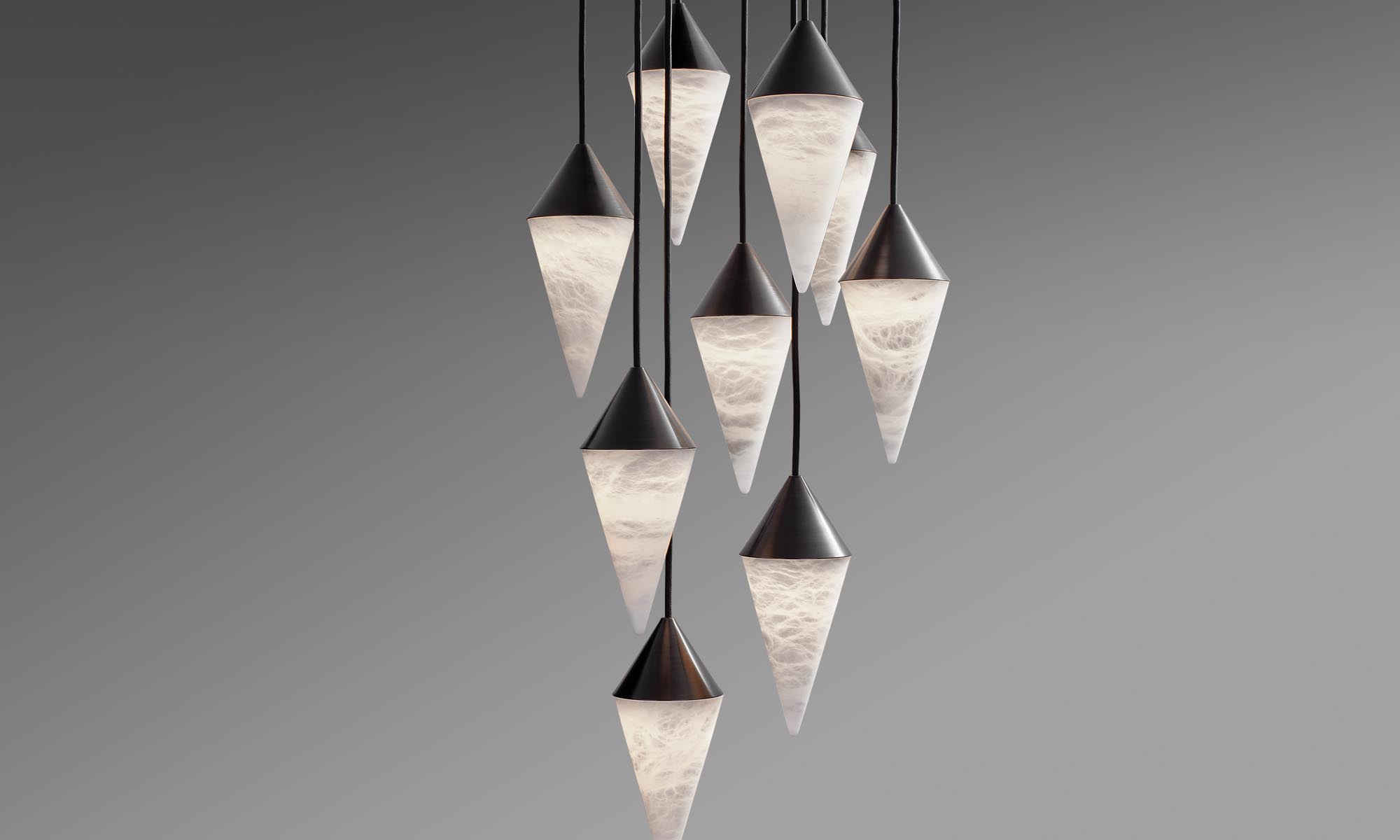Delve into Artisan Light Fixture Design
“Design is not just what it looks and feels like. Design is how it works.” Steve Jobs
This quote delivers on a very essential level. One can debate styles of design all day, but in the end a style is a very intimate preference. However, design has to deliver on that visual, tactile and functional level.
Components of light fixture design
One can also talk about design as a service, such as lighting design for example where an entire space is designed and coordinated to optimize a room’s performance in a specific way. In the end the fixture design, as well as the lighting design scope have to work hand in hand to deliver a successful result – a space that works to the user’s expectation.
According to its use the light fixture delivers the right quality and quantity of light, and a lighting design scheme delivers a coordinated performance result of all the lighting components used in a room.
How does that thinking apply to a light fixture design?
There are differences of form and performance requirements pending if you design a residential or a commercial project for example. The spaces within these project categories themselves require a unique set of design criteria. Light fixtures and light components have to be chosen for their correct value of contribution to a specific task.
Specific light fixture purposes
Aside from the form factor design criteria, a wall sconce’s primary purpose in a commercial corridor application is to light sufficiently to guarantee safe movement of its occupants, whereas a residential corridor wall sconce’s primary function may be to create a specific ambiance.
Looking at pendants in an office environment, a lighting professional examines the spacing of a fixture in relationship to its function as a direct, indirect or both direct and indirect light source – with the one purpose – to provide the exact amount of light needed.
Whereas a ring chandelier used in a living room application is chosen for its visible materiality and function to softly uplight only.
Complexity of light fixture design
Light fixture design in all of its variations that are required for all of its different uses can get complex fast. Sometimes it is challenging to determine if a fixture design is right for your space. The technical performance information can be overwhelming for the end user to understand. For example:
- What implications in a fixture design does a constant current vs. a constant voltage light engine have?
- Are 120L/W enough?
- Do I dim the color or the intensity?
- If I cannot dim, what color temperature do I choose?
This questionnaire could go on. It is best to consult with your local trades or lighting designer to assess qualification and best use. Lighting manufacturers will also provide you with expert guidance as it is in their best interest to inform you with accuracy to their products’ performance and suitable applications.
Finding a light fixture design company
Most companies manufacture and deliver a quality-built light. Their track record and reputation often speak for themselves. That thinking and attitude applies as well to how these companies deal with potentially unforeseeable job site challenges. They get the job done.
It helps to do a little research to investigate the light fixture manufacturers whose products you plan on using. Call the company, and experience their sales and service staff. Are they prompt, friendly, helpful, and informative?
Short of a fixture sample to figure out how an actual fixture works, one should look at the information provided by a company’s website. Look for clear imagery with regard to the overall product design, its details, and installation environments. You may also ask for finish samples to be sent to you.
This trifecta of reputation, clear communication of a product’s intent, plus actual finish samples helps greatly to determine if that product can work to satisfaction in your boardroom or living room design scheme. Boyd Lighting has experienced light fixture design professionals to assist you in your next design project.
